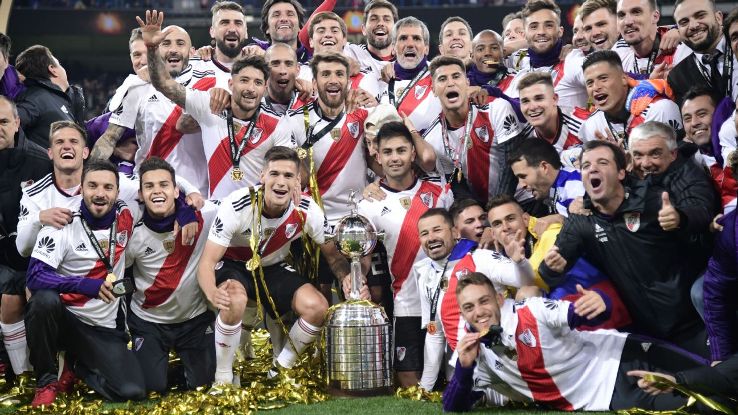
Leicester City’s incredible Premier League triumph in 2015-16 was a freak, an aberration, something that appeared impossible until it happened. However, if Leicester had won the FA Cup instead it would not have inspired anything like the same worldwide reaction. The logic is simple: the shorter the competition, the greater the chance of an upset.
The reverse of this theory helps explain why the Copa Libertadores is now dominated by South America’s big two: Brazil and Argentina. The continent’s equivalent of the Champions League was lengthened in 2017 — rather than being squeezed into the first half of the year, the action now runs all the way from the end of January to late November.
There are no more matches – in fact there is now one fewer, because the traditional two-legged final has been replaced by a one-off game on a neutral ground. But the extra time has clear consequences.
The Libertadores now straddles the mid-year transfer window. The bigger clubs with deeper pockets will be able to re-enforce their squad as the competition unfolds. Throw in the fact that Argentina and (especially) Brazil have been handed more slots in the Libertadores, and the picture is complete.
The facts speak for themselves. The last year played under the old short format was 2016, when the final was between Atletico Nacional of Colombia and little Independiente del Valle of Ecuador. Since then, the Brazil-Argentina domination has been all but complete. In 2017, they provided six of the eight quarterfinalists. Last year they provided seven; this time the number is back down to six. Over the last three years, 19 quarterfinalists have come from just two nations; the other eight countries have provided just five.
Given this scenario, it is extraordinary that in the previous five years only one Brazilian team has gone on to reach the final. With their financial advantage over the rest of the continent, including Argentina, they should have done much better.
There is, though, the certainty of a Brazilian finalist this year. After the Round of 16 ties were decided this week, one half of the draw is entirely composed of Brazilian teams. The winner of the clash between Gremio and Palmeiras in late August will face the victor of the Flamengo vs. Internacional tie in the semifinals in October. All four are giant clubs, all four are previous winners of the Libertadores, and one of them will have the chance to contest the title on Nov. 23.
Curiously, the other half of the draw is entirely non-Brazilian. It contains the two outsiders: Ecuador’s Liga of Quito are back in the quarterfinals for the first time since 2008, when they went on to win the competition, and Cerro Porteno of Paraguay are chasing their first title in a bid to catch up to great local rivals Olimpia, who have already won the competition three times.
Where one half of the draw features the clash of the Brazilian giants, the other pits the outsiders against the big two from Buenos Aires: Liga will take on Boca Juniors, while Cerro Porteno are up against River Plate.
With Boca and River in the same half of the draw, there can be no repeat of last year’s final between the two, which ended in the second leg controversially being taken to Madrid after scenes of violence in Buenos Aires that are still the subject of a case in the Court of Arbitration for Sport.
But the switch to a one-off decisive match — this year in Santiago, Chile — means that last year’s home and away drama cannot happen again in the final.
A Boca-River meeting could still happen over two legs in the semifinal, though. And the only way it won’t is if Liga of Quito or Cerro Porteno can continue to prevent the complete Brazil/Argentina domination of the Copa Libertadores for a little longer.
